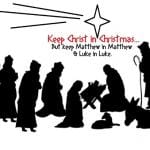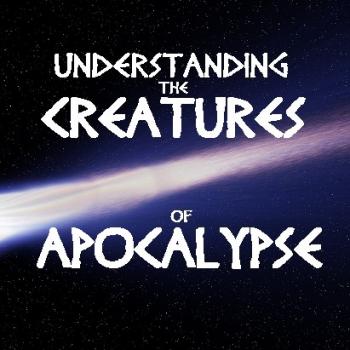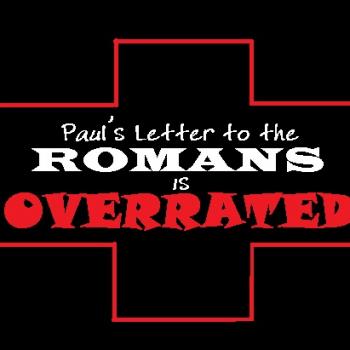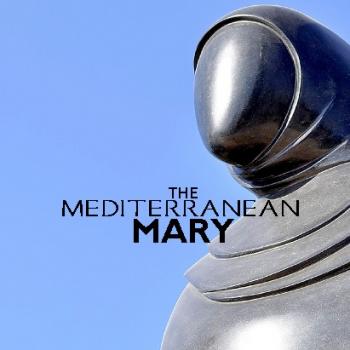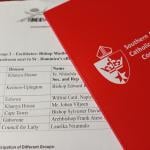
Memoirs, whether of Mary or Joseph, being used as the sources for Gospel Infancy Narratives is highly unlikely and can’t sufficiently explain them.
Memoirs of Mary and Joseph! It has to be!
This is what many Catholics and other Christians think when asked for explanation about the origins of the Gospel stories of Jesus’ birth and youth. But does this popular, nonscholarly idea really hold up to scrutiny?
The New Testament is a library of 27 documents. Only two of these writings present narratives of Jesus’ birth and earliest years. None of these writings claims that the witnesses of Mary or Joseph were used as sources for Matthew 1—2 and Luke 1—2.
Is it possible? Yes, perhaps in some way it is possible. But it is not likely. Consider the following charts:
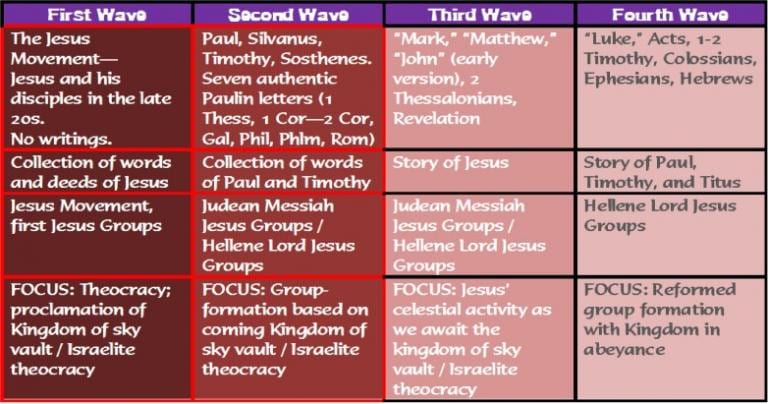
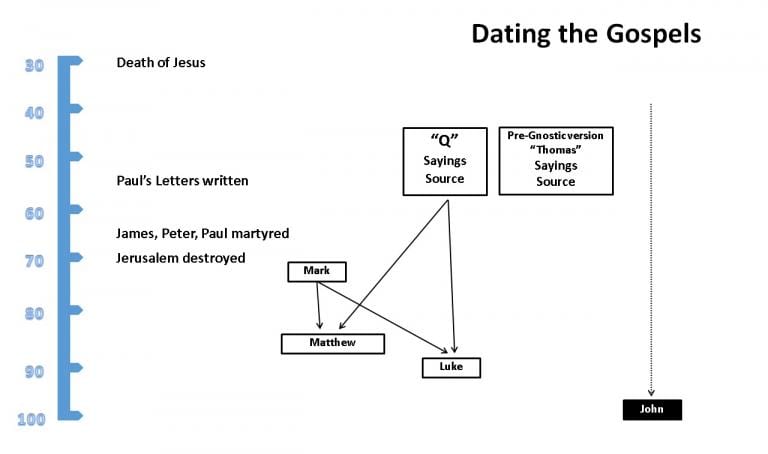
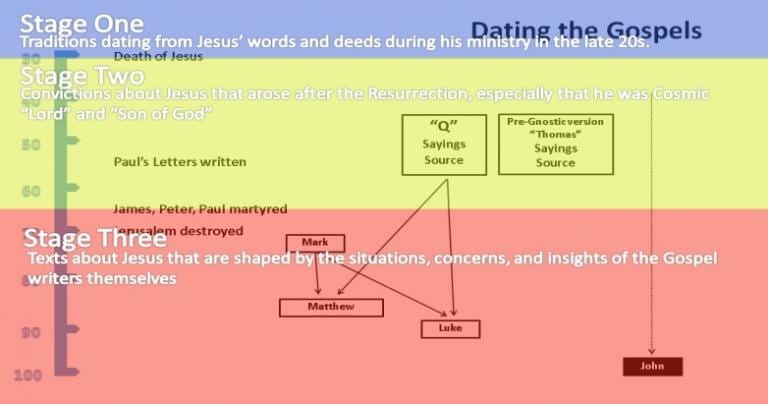
Memoirs Theory VS Synoptic Evolution
In our last post we explained that the Gospels are theological portraits and not biographical photographs. They evolved that way. When it comes to the evolution of the Synoptic Gospels, the vast majority of biblical scholars accepts Markan priority. The first Gospel “Mark” has no infancy narrative. His story of Jesus begins with the ministry of John the Baptist and Jesus’ baptism. His Jesus Group apparently didn’t care enough about Jesus’ birth to write about it.
In the charts above, note the dependence “Matthew” and “Luke” have for “Mark.” In our first post in this series, readers were invited to carefully read Matthew 1—2 and Luke 1—2 with pad and pen handy, marking down what is unique to each. If you did this, your notepad should tell the tale of how vastly different each story is. They disagree sharply on many things. Indeed, realistic harmonization of these differences is not possible.
A fuller examination of the documents called “Matthew” and “Luke” reveals that neither evangelist read the other’s work. That is why, in the timeline of the Gospels in the charts above, there are no arrows of relations or dependencies between these two documents.
Memoirs of Joseph?
How likely is it that Joseph served as an eyewitness-source for “Matthew” or “Luke”? Not very. In no story of Jesus’ ministry does Joseph appear. He was probably dead well before the 20s CE. Undoubtedly, Joseph was long dead before any Gospel had been written. Again, refer to the charts above.
No Jesus group document written before 70 CE refers to Joseph, the father of Jesus. Paul never mentions him. In New Testament documents written after 70 CE, we begin to see references. The Matthean Joseph is called “righteous man,” and fittingly, has conversations with an angel. The Matthean Joseph claims Jesus as his son (there is no adoption in the ancient Middle East). Whereas the Markan Jesus is an artisan, in “Matthew” Joseph is. Joseph is related to David in two irreconcilable genealogies. But “Luke,” while agreeing that Joseph is Jesus’ father, never refers to Joseph as an artisan.
Elaboration (and even outlandish augmentation) grows in second century Jesus group documents concerning Joseph. But Joseph is not referenced at all in any New Testament documents prior to 70 CE. Did Joseph play any role in the historical Jesus’ life? If Joseph was around following Jesus’ puberty, culturally-specific folk wisdom models for fathering boys help illustrate sobering scenarios about what such a role would look like (Proverbs 13:24; 19:18; 22:15; 23:13-14; 29:15, 17; Sirach 30:1-13; Hebrews 12:5-13).
Regardless, Joseph was probably dead before Jesus’ ministry. He could hardly have been used decades later as a source for “Matthew” or “Luke.” It’s extremely doubtful that his “memoirs” were used.
Memoirs of Mary
We have mentioned before that appreciation of Mary, the mother of Jesus, evolved slowly. “Mark” has a very negative estimation of Mary and the biological family of Jesus (Mark 3:20-35). “Matthew” does soften this somewhat, but not a lot! It’s from “Luke” where we see the origins of later Mariology.
According to “Luke” and “John,” Mary was still alive during the Jesus Movement (29 CE?). Did she accompany Jesus as he healed and proclaimed theocracy? Maybe. But the Gospels don’t tell us this. In fact, “Mark” seems to indicate otherwise.
What exactly was the relationship between the apostles, who passed along and preserved the tradition, with the Galilean peasant woman Mary? Be careful turning to later legends and pious sentimentality. Despite the mental gymnastics of fundamentalistic “apologetics,” we really can’t say. And there are other reasons to doubt that these Infancy Narratives derive from her “memoirs.”
Memoirs VS the Historically Plausible
Some like to think of the anonymous spinmeister we name “Luke” as being a master historian and detail-precise researcher. Well it’s doubtful “Luke” ever stepped foot in Syro-Palestine. He gets the geography wrong, its practices wrong, its roofs wrong, its beds wrongs. His Israelite ancestry probably left the land of Israel centuries prior for some major Mediterranean city, probably Athens or Corinth.
When would “Luke” have spoken with Mary, anyway? And how long did she survive after Jesus’ death and resurrection? We know that the figure we name “Luke” was an elite scribe, and as a lad had been well taught with the progymnasmatta, Greek handbooks or “how-to” manuals filled with exercises on how to organize praising remarks of a famous subject. Both “Matthew” and “Luke” follow these school instructions quite closely. We will see this later.
Whenever ancient writers described the birth and childhood of a some famous person, the accounts they rendered were always founded on the prestigious roles and status their subject enjoyed in adulthood. In antiquity, no one got such a childhood account unless he died and became famous (yes, I used the masculine pronoun deliberately). Being made Cosmic Lord and Messiah soon to return to inaugurate Israelite theocracy qualified Jesus as famous and perhaps deserving a childhood account (he got two that are irreconcilable in details), despite his shameful peasant origins.
How the Ancient Writers Saw Children
Ancients believed that personality was immutable. Therefore to them, children had to be adults-in-miniature. Neither “Luke,” “Matthew,” nor any ancient scribe perceived people growing up through psychological stages of development. Rather, ancients looked to other considerations, and divided human life by those views.
Say you were an ancient Mediterranean who belonged to the Pythagorean tradition. Then you would probe around the world looking for the deeper meaning of numbers. Thus for you it would be obvious that the number four has a mystical relationship with the seasons of the year. Hence, you would employ a four-season model for the stages of human life (see Ptolemy, Tetrabihlos 1.10 par. 20).
But let’s say you were more Ptolmaic in thought. Your concentration would then be spent on the mystical meanings of seven. Therefore you might imagine a seven-stage model for a famous person’s lifetime, each governed by the seven planets of the traditional horoscope and week—SUN’S-day, MOON’S-day, MARS’-day, MERCURY’S-day, JUPITER’S-day, VENUS’-day, and SATURN’S-day (see Tetrabiblos 4.10 par. 204-206).
How Mediterranean Peasants Saw Children
Imagine that you were an illiterate peasant 30 year old from first century Galilee. Forget any philosophical outlooks, in that case! Health, nutrition, and hygiene everywhere around you is atrocious. Your peasant life began with childhood, a terrifying time of extremely high mortality risk. Then—lucky you!—you managed to make it to adulthood. Few of your peers, fellow peasant survivors, will make it to to “old age.”
Context scholars Richard Rohrbaugh and Bruce Malina explain that when Galilean peasants passed into the world of adults, he or she “entered adulthood.” Upon puberty, Middle Eastern boys did that, around 12 years old. Middle Eastern girls like Mary entered adulthood just before or at menarche, around the time marriage happened. In the world of the Bible, entering adulthood isn’t psychological. Rather, it is a social transition.
According to Rohrbaugh and Malina, to become an adult, a Middle Eastern boy socially transitions from the world of women into the [brutal] world of men. But for a Middle Eastern girl to become an adult, she must socially transition from one patriarchal compound [the paternal household] into another patriarchal compound [her father-in-law’s household, the house of her husband].
What Does This Tell Us?
Taking in all of this helps scholars like Rohrbaugh and Malina to understand why any accounts of the childhood of famous people found in the Bible (e.g., Matthew 1—2 and Luke 1—2) had to have been securely inferred from the adult behavior of the famous figure in question. Regardless of whether the historical “Luke” painted or not, memories of the adult and risen Jesus painted the picture of how to see Baby Jesus.
The prevailing idea among ancient writers was that from the very first moment of his birth, the Great Man or Hero must have had his great and heroic characteristics already. These remained with him his entire life. Keep in mind that both authors we call “Matthew” and “Luke” (and their audiences, also!) firmly believed that Jesus of Nazareth was the Messiah empowered and honored by the God of Israel. They all accepted that given that the adult Jesus is the promised Messiah, raised by the God of Israel, this necessitated that his birth and childhood had to have been just as “Matthew” and “Luke” had described it! This was so despite the fact that these two accounts (hardly 21st century biographical works) have very little in common with each other.
So whatever you find in Matthew 1—2 and Luke 1—2 concerning the persons surrounding Jesus at his birth and throughout his childhood, these were placed there for the purpose of highlighting Jesus as a significant person. From the beginning of his earthly life, Jesus was a Great One, a Mediterranean Hero. Therefore, we can say with certainty that none of this was written to satiate some devotional curiosity of Western Christians living centuries in the future.
Therefore why would “Luke,” “Matthew,” or ANYONE need to go find Mary’s memoirs to get the True Hollywood Story on what “REALLY HAPPENED”? Do you see what you are doing when you think like that? You are making the Evangelists into 21st century Western investigative reporters. That cannot be.
They Ain’t Memoirs
Given all of this, what do we have in Matthew 1—2 and Luke 1—2? Whatever they are, these accounts cannot be well-researched, historiographical reports of the earliest days of Jesus of Nazareth. Instead, they are likely what Bruce Malina and Richard Rohrbaugh call “preflections” of Jesus the risen Messiah and Cosmic Lord.
For example, Malina and Rohrbaugh explain that it was believed that “the last days” were entered by the resurrection of Jesus. Therefore, “young men shall see visions and old men dream dreams” (Acts 2:17) was the expectation. This principle explains why the Matthean story features old men dreaming dreams (Joseph) with information from God. Even though “Matthew” never tells us Joseph is old, we can safely bet that anyway due to his “dreaming dreams” in this “last day” expectation.
When we turn to “Luke,” Malina and Rohrbaugh explain that he must inform his readers that Zechariah is old because he has a vision rather than dreams. These scholars explain that if that detail had not been provided perhaps his audience might conclude Zechariah was a young man.
Additionally, Malina and Rohrbaugh illustrate that should the God of Israel communicate with any woman whatsoever we ought to expect such communication to concern reproductive expectations and gender-based roles. How interesting that this is just what Luke 1:26-38 gives us.
Does ANY of this look like investigative reporting to you?
Sentimentality and the Fantastical
A great many people can’t stand to hear any of this. It’s outrageous. They imagine Mary sitting down with “Luke,” ace reporter trained in fact-checking and journalistic ethics. She patiently recounts to him all the details about Jesus’ birth with photographic and phonographic accuracy. In other words, they ethnocentrically and anachronistically fantasize that Mary and “Luke” are 21st century Westerners and that composing the Gospels was a 21st Western business. The New Testament and the earliest centuries of the Body of Christ never suggest this.
Ask yourself: If Matthew 1—2 and Luke 1—2 really did come from one witness-source, why do they differ so? And if you think, like not a few theologians, that Joseph was the source for Matthew 1—2 and Mary was the source for Luke 1—2, again, how are both stories so completely different? The memoirs differ so greatly that scholar Raymond E. Brown said that if this were true “evidently Mary and Joseph never spoke to one another!”
Tomorrow we lay out the differences.


